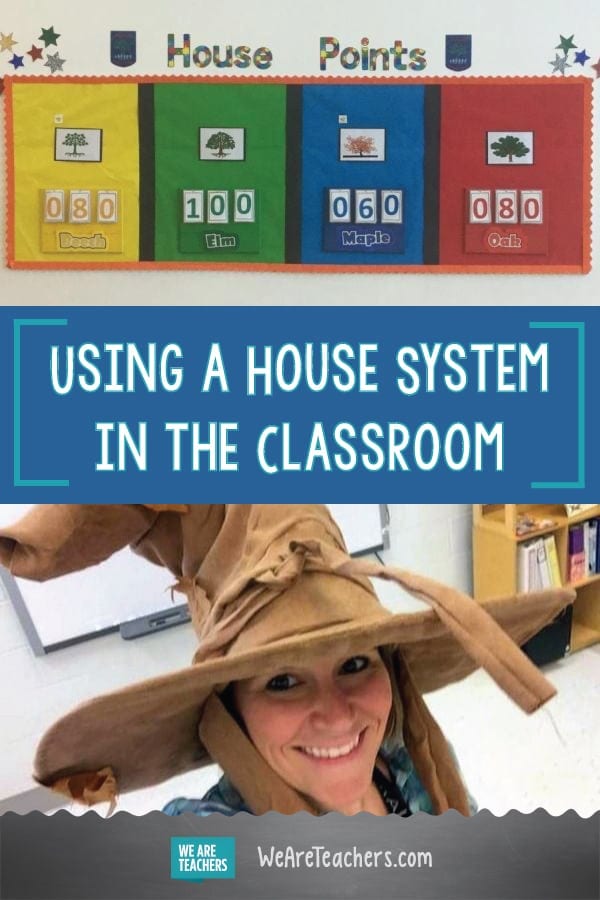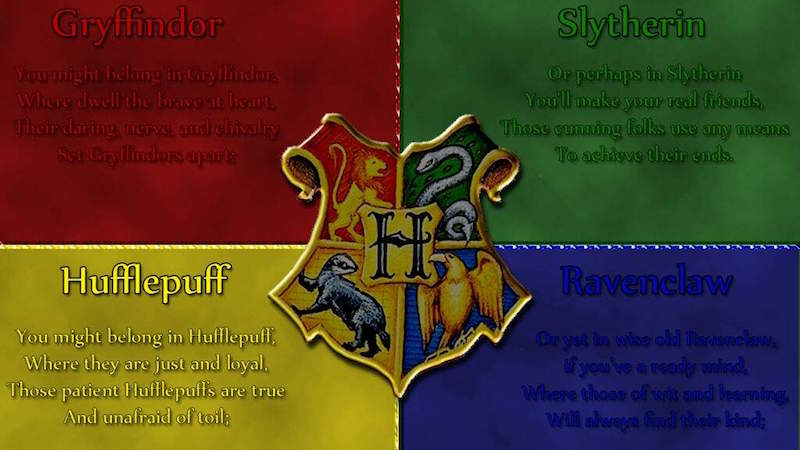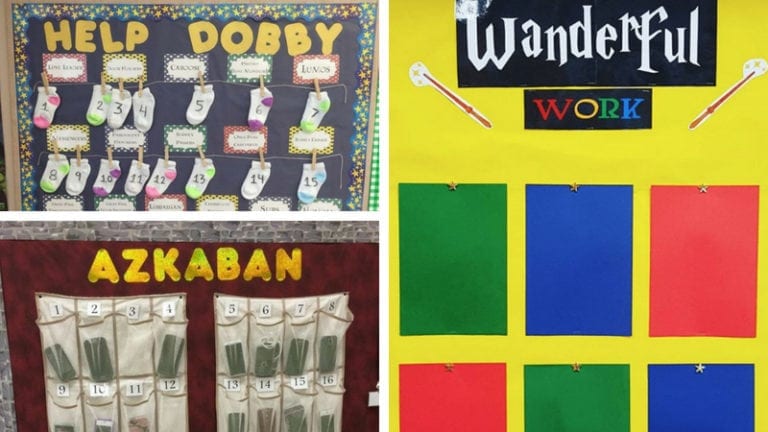When Harry Potter first took the world by storm more than 20 years ago, American teachers were introduced to a new concept: the British house system in schools.
In short, it’s common in English schools for students to be divided up into “houses.” Throughout the school year, kids earn points for their houses for good behavior, special accomplishments, and more. Since each house includes kids from every grade, it fosters a sense of community throughout the school, too.
Teachers all over the country are now giving the house system a try, and it’s not just limited to Harry Potter. Recently, we asked our WeAreTeachers HELPLINE users to share their best ideas for using the house system in schools.
Choose a theme.
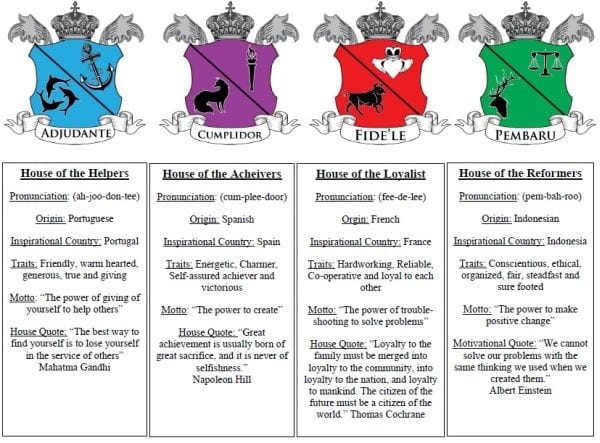
Photo credit: La Marque Middle School
Some teachers love using the classic Harry Potter houses, but others customize house systems in their own ways.
“We use house points in our Harry Potter classroom. It’s awesome, and the kids push themselves to earn [points] not just for themselves but for their housemates, too. We do a house champion each quarter to help with buy-in also.” —Jessica W.
“My sixth grade teacher used Greek cities to group us, which is how she taught us about Ancient Greece. It was awesome. There was a certain amount of association. I was in Athens, and I FELT like a smartie. I used the same idea in my current sixth grade classroom by assigning a Greek god to each group (we’re reading The Lightning Thief), and I assigned most of my most struggling students in each class to Athena. Now whenever I see scholarly habits, I tell them ‘Athena would be so proud,’ and I give them a point. It’s really boosting how they see themselves in my class.” —Caelan M.
“As I am a social studies teacher, I would use actual figures in history.” —Bailey B.
“I had a competition between my seventh grade math classes, and they were broken into Hunger Games districts.” —Robin Z.
“We have split them into houses, but our houses spell K.I.D.S. for Kindness, Integrity, Determination, and Synergy. They were randomly sorted this year and can earn points for going above and beyond.” —Katrina M.
Make sorting a magical experience.
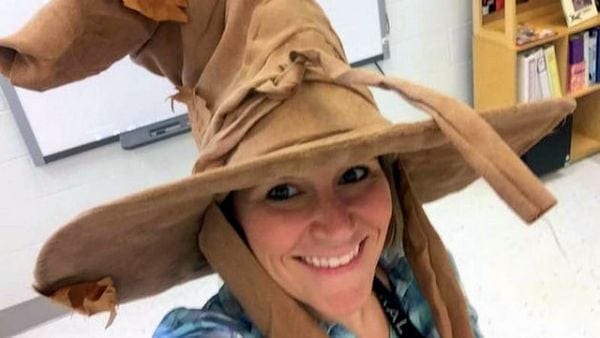
Teacher Jessica W. (above) goes all out in her Harry Potter-themed classroom. “For first quarter, they drew a number [between one and four], which sorted them. They put on the hat, and I had prerecorded sound clips of the sorting hat saying each house’s name. They thought it was so magical! Over the rest of the year, as I get to know them more, kids can move in and out of houses each quarter.” (See more of Jessica’s amazing Harry Potter classroom.)
The random drawing process is ideal for assigning students to houses in any system. Another option is to split kids using free quizzes you can find online, like Jamie Lynne M. does, or group students by class periods, grades, or teacher. However you do it, make it an event and encourage kids to feel like a team right from the start.
Let kids sort themselves.
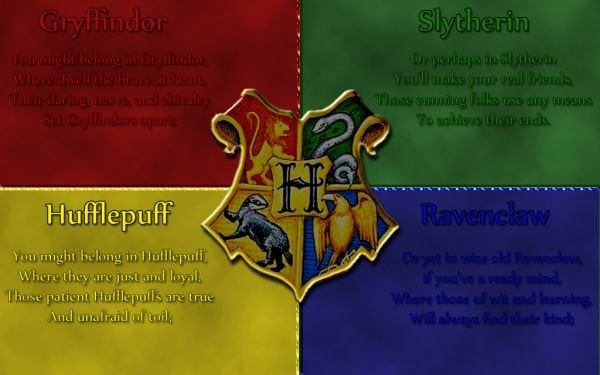
Make sure students know the defining characteristics of each house, and then allow them to choose. Teacher Melana K., who uses the Harry Potter theme, makes them work for it: “We close read the sorting hat song to determine what characteristics each house is made up of. Then the kids have to persuade me which house they belong in.”
Some teachers worry about the effect of having a house like Harry Potter‘s Slytherin, which is often associated with the “bad kids.” But that doesn’t mean you can’t use it effectively if you’re implementing a Harry Potter theme.
“Slytherin isn’t a ‘bad house.’ It was about the choices those students made. Slytherin qualities consist of the ability to achieve goals through out-of-the-box-means, sometimes through cunning, but again it points back to individual choices, which is a good lesson to learn.” —Pamela G.
“Honestly, the kids that were sorted into Slytherin were very excited about it. We talked a lot about how Slytherin house is all about being determined and accomplished. We talked about how cunning is not a bad thing. It is more about being able to get the things we desire in ways that others may not think about.” —Jessica W.
Create a fun and easy tracking system.
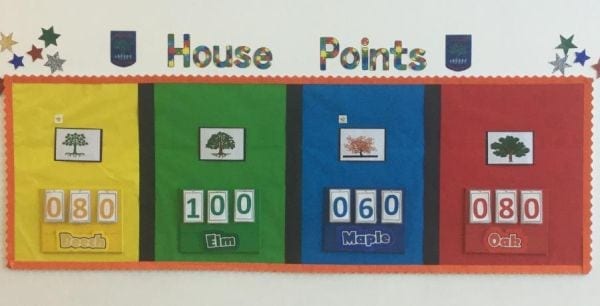
Photo credit: Hylands Primary School
Many teachers report that their house systems break down because it’s too hard to keep track of all the points. Try a simple idea like colored glass gems in clear glass vases, like Jessica W. does, or use these other methods.
“I use magnets on a board. The bigger the point value, the bigger the magnet.” —Tesa O.
“I have four of those premade progress chart posters that match the colors, and I fill in a square when kids are on task, do their planner for the day, etc.” —Jamie Lynn M.
Darsha N. says, “Classcraft is a way to do houses and reward good behavior. I have colleagues who RAVE about how it increases engagement. It’s web based, so it works best if you have internet, but it can work if only the teacher has a device. You can customize the rewards and such for your own priorities.”
Reward success!
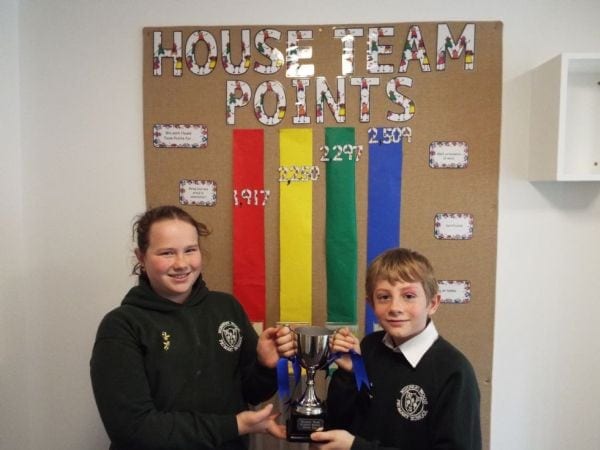
Photo credit: Nunnery Wood Primary School
Be sure to celebrate the house that comes out on top at end of the semester or year, whether it’s with a party, treats, or even a cup or trophy the winning house can proudly display.
“At midterms I bring treats for the house with the highest percentage.” —Jamie Lynnn M.
“The house with the most points earns a class party.” —Jill M.
“Each semester there is a winning house that gets pizza and ice cream. I also bought the Harry Potter Triwizard Tournament Cup as their house cup.” —Tesa O.
Top Image Credit: Aspengrove School
What are your best tips for using a house system in schools? Come and share in our WeAreTeachers HELPLINE group on Facebook.
